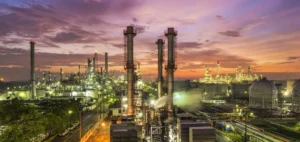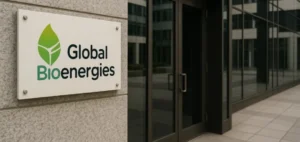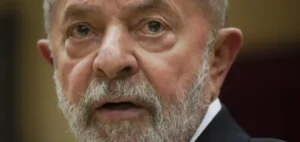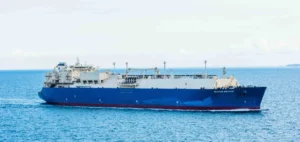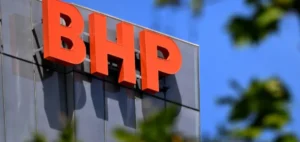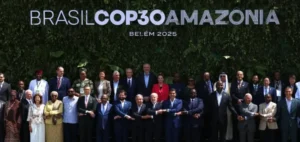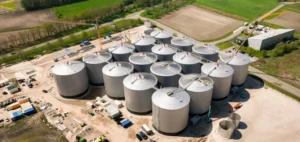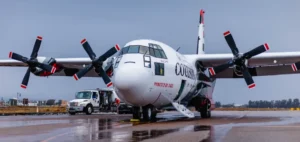The 2024 UK general election is taking place against a backdrop of crucial energy transition, pitting contrasting visions between the Labour Party and the Conservative Party. The two parties propose distinct strategies for tackling the country’s energy and environmental challenges, highlighting their respective priorities for sustainable development and energy security.
Renewable energies at the heart of our programs
The Labour Party, under the leadership of Keir Starmer, is proposing an ambitious plan to significantly increase renewable energy capacity in the UK. The aim is to increase installed offshore wind power capacity fivefold to 75 GW by 2030, while tripling solar photovoltaic capacity to 60 GW. To achieve this, the party plans massive investment in the grid infrastructure needed to integrate this renewable energy into the national system. In addition, the Labour Party is committed to creating Great British Energy, a state-owned company to produce clean energy, reduce energy bills and strengthen the country’s energy security.
In comparison, the Conservative Party program led by Rishi Sunak, while less ambitious, aims to double offshore wind capacity to 40 GW by 2030. The Conservatives are counting on market mechanisms and public-private partnerships to facilitate investment in renewable energies, reducing regulatory barriers to accelerate the deployment of new infrastructure.
Hydrogen: Green versus Blue
The Labour Party is banking on the development of green hydrogen, with a target of 10 GW of electrolysis capacity by 2030. The plan includes investment in the infrastructure needed to transport and store hydrogen, as well as support for pilot projects in industry and transport. The aim is to make the UK a world leader in the production and use of green hydrogen.
The Conservative Party is proposing a mixed approach, supporting both green and blue hydrogen, with a target of 5 GW of electrolysis capacity by 2030. Their program includes investments in carbon capture and storage (CCS) technologies to support this blue hydrogen production. Nevertheless, this approach to blue hydrogen is the subject of speculation in the election campaign, not least because of the associated growth prospects and strategic investments. This technology offers economic advantages by using existing natural gas infrastructures, reducing initial costs compared with green hydrogen, which requires greater investment in electrolysis and renewable energies. However, to realize its full potential, blue hydrogen needs to overcome a number of challenges. This includes the need to effectively develop CO2 capture and storage, as well as to manage continued dependence on fossil fuels. Technological advances in CCS and sound regulatory frameworks are needed to guarantee the safety and long-term viability of this technology. Substantial investment in research and development is crucial to optimize the economic and ecological efficiency of blue hydrogen. Supportive government policies and international collaborations can also play a key role in maximizing the potential of this technology in the country’s energy transition.
Carbon neutrality objectives
The Labour Party is committed to achieving carbon neutrality by 2040, ten years ahead of the UK government’s current target. This ambitious plan calls for rapid decarbonization of all sectors of the economy, including industry, transport and energy production. The Labour Party also plans to retrofit 19 million homes by 2030 to improve energy efficiency, reduce electricity bills and cut CO2 emissions. In contrast, the Conservative Party maintains the 2050 carbon neutrality target, adopting a more gradual and pragmatic approach to achieving this goal while balancing the country’s economic and environmental needs.
Nuclear and Energy Renovation
With regard to nuclear power, the Labour Party plans to invest in the research and development of advanced nuclear technologies, while assessing their economic and environmental viability. However, the priority remains on renewable energies. For its part, the Conservative Party’s program includes the construction of new nuclear power plants, with a target of 8 GW of new installed capacity by 2035. The plan also includes the promotion of Small Modular Reactors (SMR) and the extension of the service life of existing nuclear power plants.
In terms of energy renovation, the Labour Party is proposing an ambitious plan to renovate 19 million homes by 2030, aimed at improving the energy efficiency of buildings and reducing electricity bills for households. Conservatives, while supportive of energy efficiency, focus more on market solutions and public-private partnerships to encourage these improvements, with tax incentives for homeowners.
Other parties and their proposals
In addition to the two main parties, the Liberal Democrats and the Greens are also presenting their visions for the UK’s energy future. The Liberal Democrats, led by Ed Davey, advocate a rapid transition to a green economy, with a particular focus on renewable energy and reducing dependence on fossil fuels. The Greens, led by Carla Denyer and Adrian Ramsay, are calling for total decarbonization by 2030 and an immediate transition to 100% renewables, with strong policies on climate justice and support for vulnerable communities.
The 2024 general election will be decisive for the UK’s energy future, with each party offering specific solutions to meet the challenges of the energy transition.






